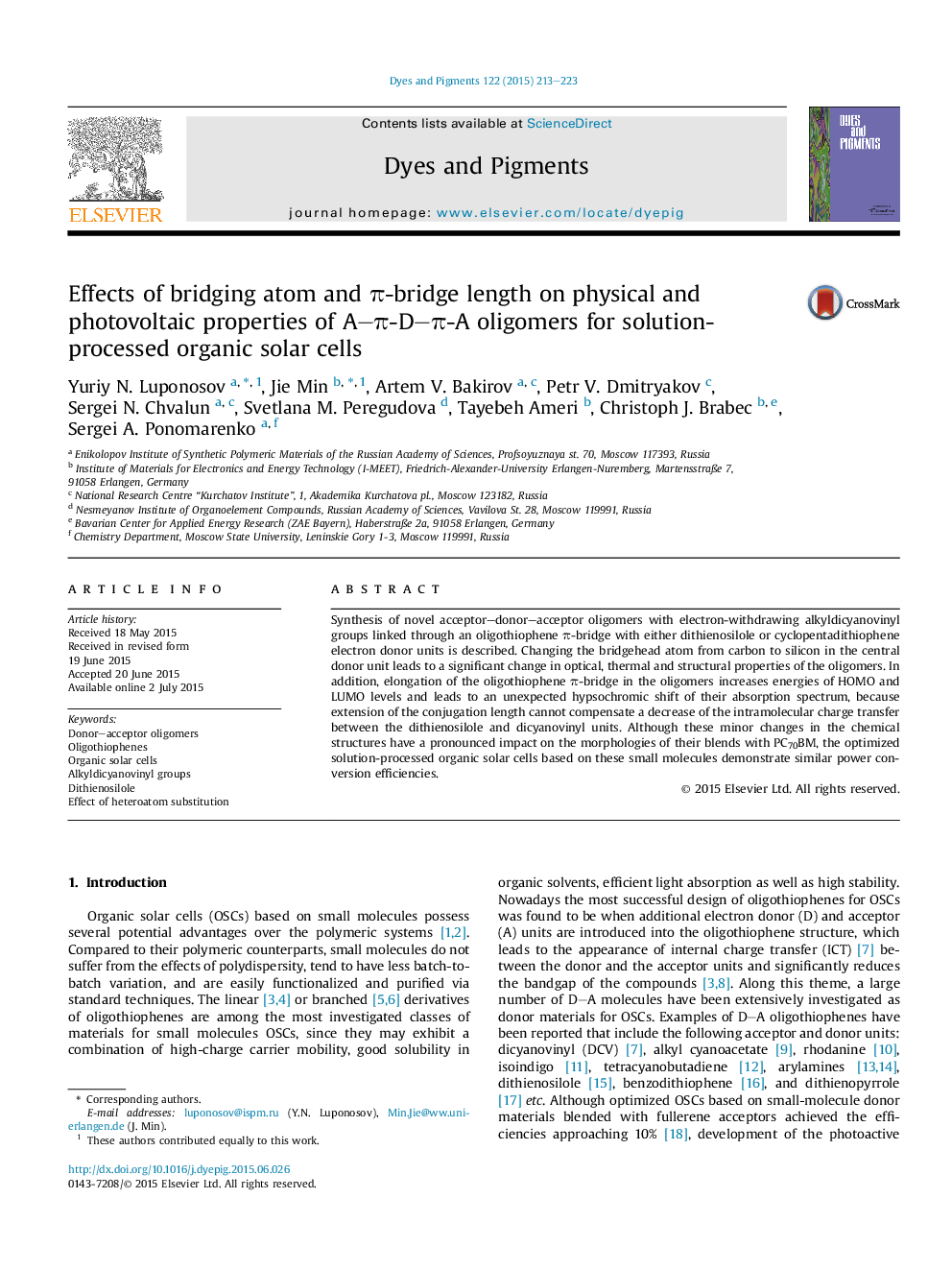| Article ID | Journal | Published Year | Pages | File Type |
|---|---|---|---|---|
| 175716 | Dyes and Pigments | 2015 | 11 Pages |
•Novel D–A oligomers with alkyldicyanovinyl acceptor groups for OSCs were reported.•The structure–property relationships in these oligomers were systematically studied.•Bridgehead atoms influence optical, thermal and structural properties of the oligomers.•Length of π-bridge influences optical and electrochemical properties of the oligomers.
Synthesis of novel acceptor–donor–acceptor oligomers with electron-withdrawing alkyldicyanovinyl groups linked through an oligothiophene π-bridge with either dithienosilole or cyclopentadithiophene electron donor units is described. Changing the bridgehead atom from carbon to silicon in the central donor unit leads to a significant change in optical, thermal and structural properties of the oligomers. In addition, elongation of the oligothiophene π-bridge in the oligomers increases energies of HOMO and LUMO levels and leads to an unexpected hypsochromic shift of their absorption spectrum, because extension of the conjugation length cannot compensate a decrease of the intramolecular charge transfer between the dithienosilole and dicyanovinyl units. Although these minor changes in the chemical structures have a pronounced impact on the morphologies of their blends with PC70BM, the optimized solution-processed organic solar cells based on these small molecules demonstrate similar power conversion efficiencies.
Graphical abstractFigure optionsDownload full-size imageDownload as PowerPoint slide
